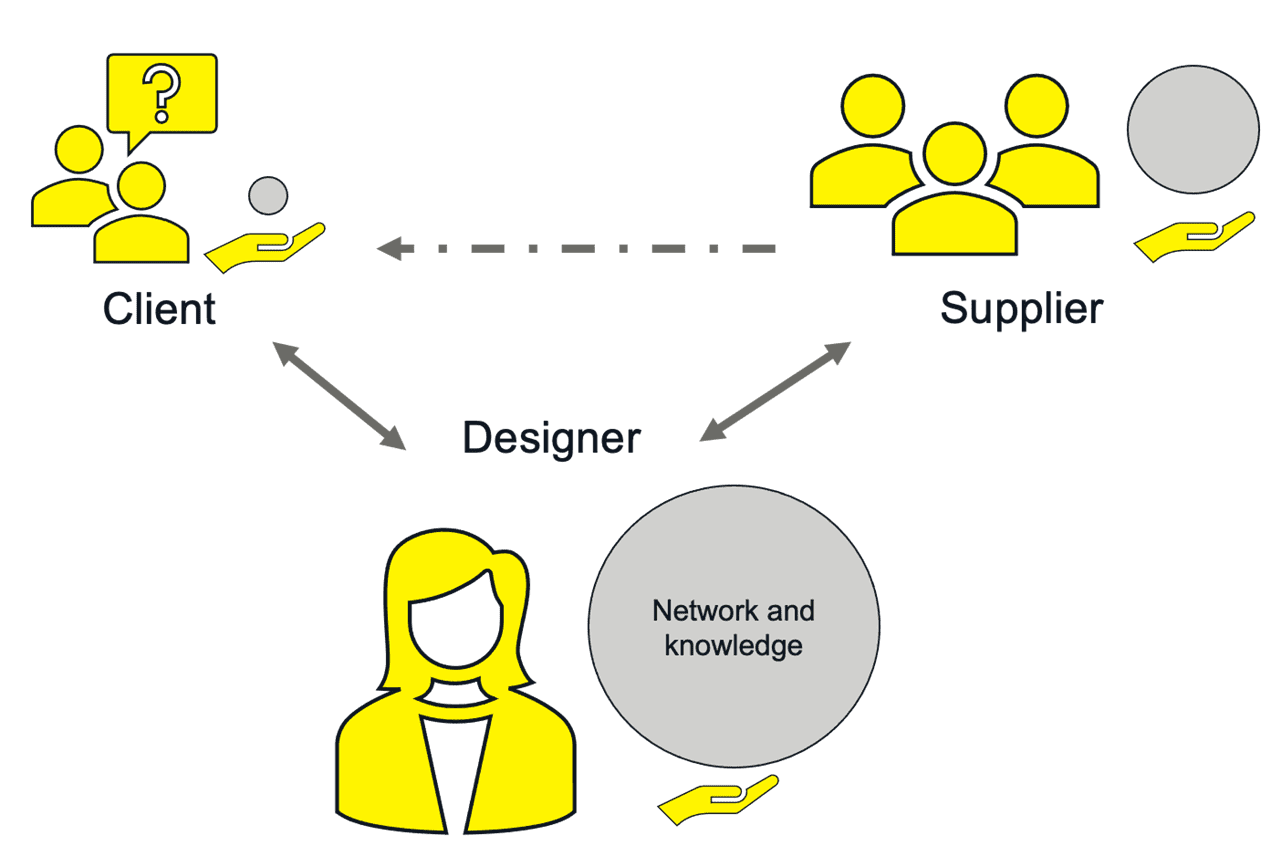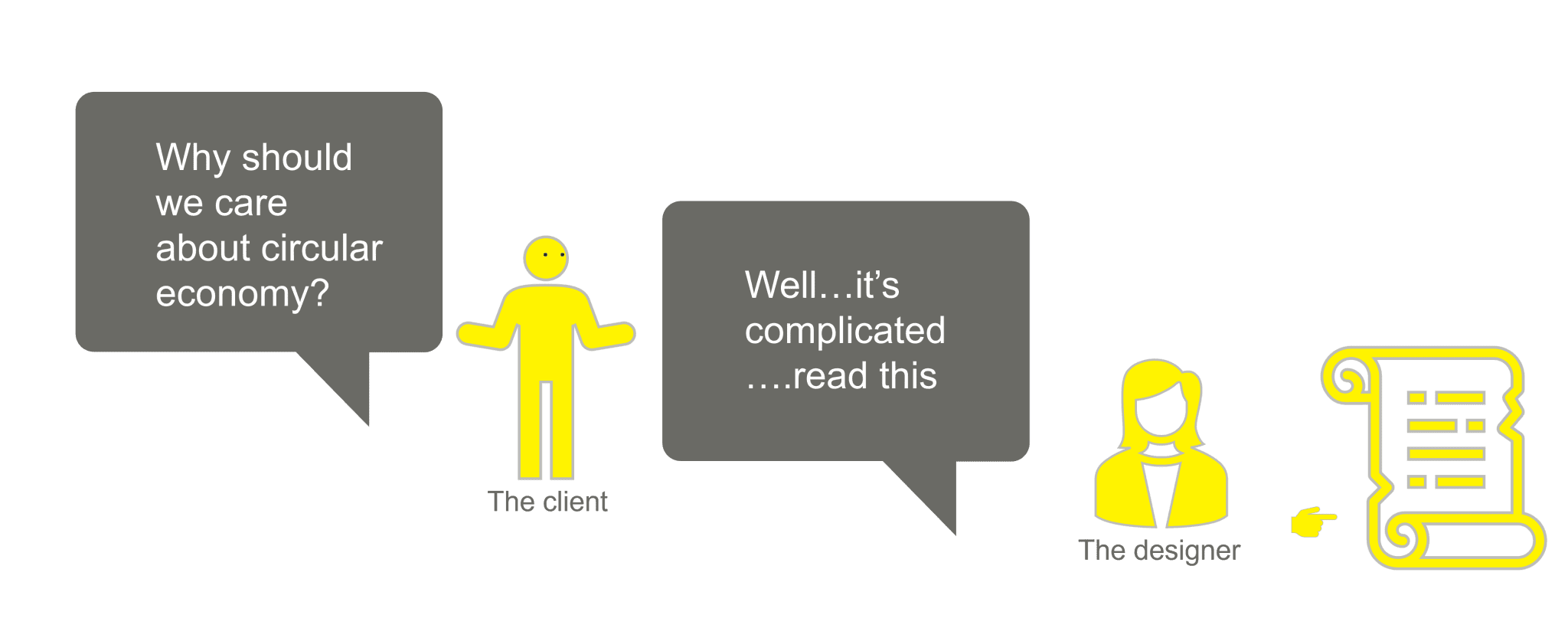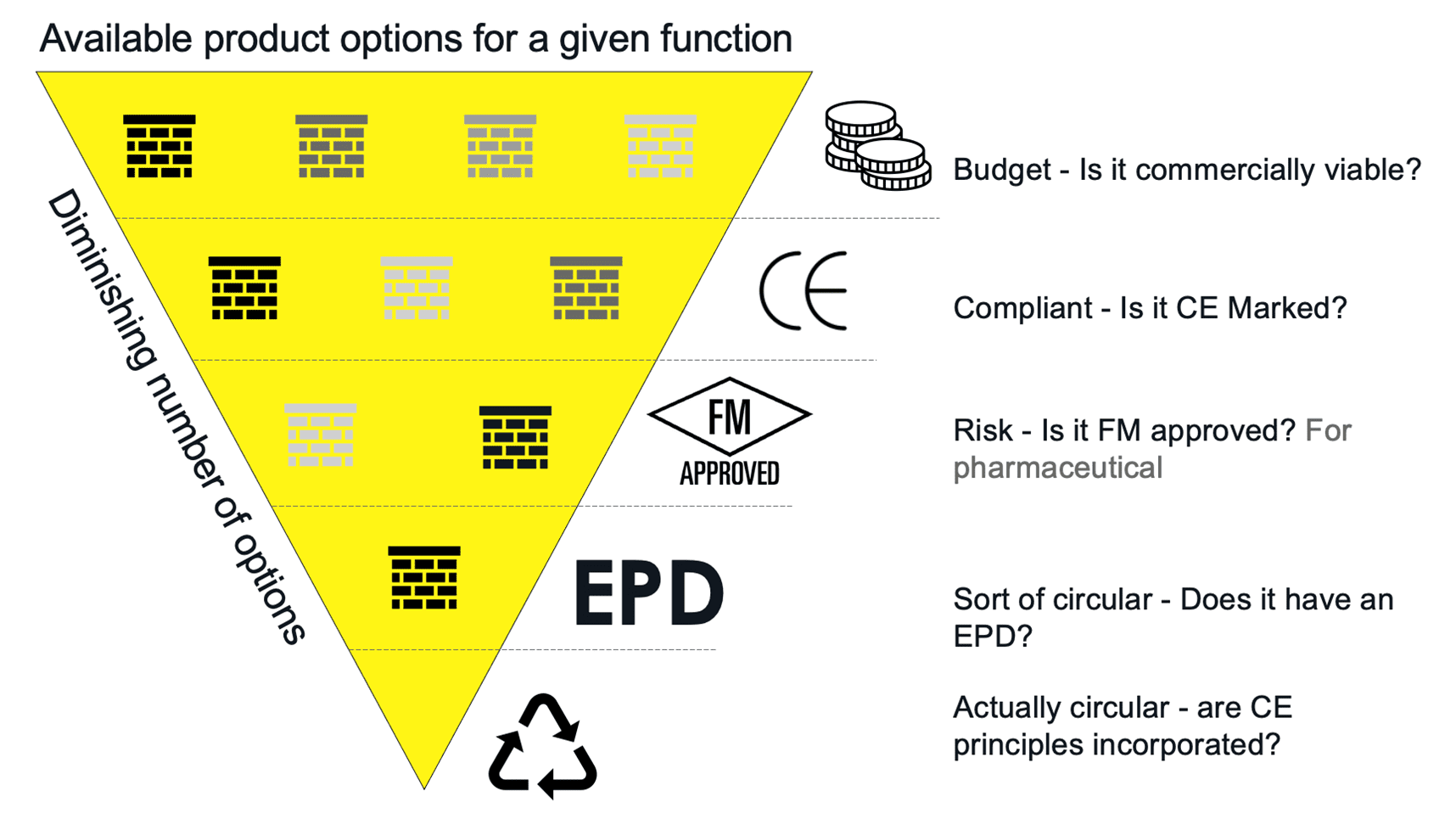The challenges facing designers
Richard O Hegarty, Sean Hogan, Rosemarie MacSweeney
Almost all definitions of the circular economy begin with something along the lines of…
“We currently operate in a linear economy where we take, make and dispose. The circular economy is…”.
It is rare to find anything where the definition of what that thing is, begins with a definition of what it is not. But in the case of something as apparently abstract as the circular economy, by telling us what it is not, we can conceptualise what it could be!
This is also where the challenges begin for us – the designers.
Our job is to construct and maintain the connections between our vast network of suppliers (those who sell the products) and clients (those who buy the products). Without designers, and our acumen for holistic problem solving, finding the right solutions from the plethora of available options can be challenging. Navigating this often-unchartered territory is not a job for anybody. At RKD we relish this challenge and specialise in enabling the realisation of solutions for our clients.

In the case of the circular economy, this challenge is compounded by several additional challenges. Challenges which were outlined in a presentation delivered by Sean Hogan, RKD Sustainability +Research Director, at the ‘Circularity & Profitability in Construction’ symposium in November 2022[1]. The presentation synthesized the challenges into three groups:
1. Importance – How do we explain that circular economy is important?
2. Options – How do we know what products are “best”?
3. Standards – What is the current decision making hierarchy?
Is the circular economy important?
 Explaining the importance of something which is typically defined by what it is not, is indeed a challenge. Albert Einstein once (apparently) said:
Explaining the importance of something which is typically defined by what it is not, is indeed a challenge. Albert Einstein once (apparently) said:
“If you can’t explain it simply, you don’t understand it well enough.”
The question then is, do we fully understand it? and if not, are we alone in this state of ambiguity?
Beginning with the latter, academic research would suggest we are not alone. In fact, two articles in high-impact journals cited the lack of understanding of circular economy as one of the major barriers restricting its implementation in the construction sector [1], [2]. Bertozzi (2022) specifically notes that:
“It emerges that Circular Economy principles and strategies are not yet broadly understood and applied”
While we have implemented circular economy principles on several past projects it is only recently are we being asked to explain circularity and its merits more holistically.
Do we know what products are most circular?

In order to specify the most circular materials and methods we need some sort of metric. Lord Kelvin and/or Peter Drucker (and probably some other less well known people) once said:
“If you can’t measure it, you can’t improve it.”
When it comes to carbon it is easy to measure, at least relatively speaking. A common metric exists and can be measured following standard procedures and disclosed using Environmental Product Declarations (EPDs). But in the case of the circular economy, no one-size-fits-all indicator exists. In fact, a visit to the European Commission’s website yields a table of 14 systems with over 100+ individual metrics [3].
One solution might be to expand the current EPD system to incorporate circular economy metrics. A solution which would require further product categorisation to ensure like-for-like comparisons are being drawn.
The current decision-making hierarchy – product level
Finally, and perhaps the most impenetrable of all barriers, is the limited number of options we have in our library of product solutions.
As we progress through the decision making gates (budget, compliance, risk, carbon, etc.), by the time we get to try and specify a product which incorporates circular design principles the choice of options, in the best case scenario, will be limited, and in the worst case scenario will be non-existent.

Final thoughts
We have in the past, and will continue in the future, to incorporate circular thinking in our design whenever we can. But as outlined, there are several challenges we need to navigate through carefully as we strive for holistic circularity as an industry. Early-stage decision making during the design stage can offset huge amounts of construction waste and can challenge the demolish-rebuild status quo. It is true restoration and/or maximising circularity won’t always be viable but with critical design thinking we can ensure that opportunities aren’t missed.
References
[1] Y. Yu, V. Junjan, D. M. Yazan, and M.-E. Iacob, “A systematic literature review on Circular Economy implementation in the construction industry: a policy-making perspective,” Resour. Conserv. Recycl., vol. 183, p. 106359, Aug. 2022, doi: 10.1016/j.resconrec.2022.106359.
[2] C. Bertozzi, “How is the construction sector perceiving and integrating the circular economy paradigm? Insights from the Brussels experience,” City Cult. Soc., vol. 29, p. 100446, Jun. 2022, doi: 10.1016/j.ccs.2022.100446.
[3] European Commission, “Measuring circular economy – new metrics for development?,” 2022. https://ec.europa.eu/newsroom/env/items/624232/en (accessed Oct. 03, 2022).